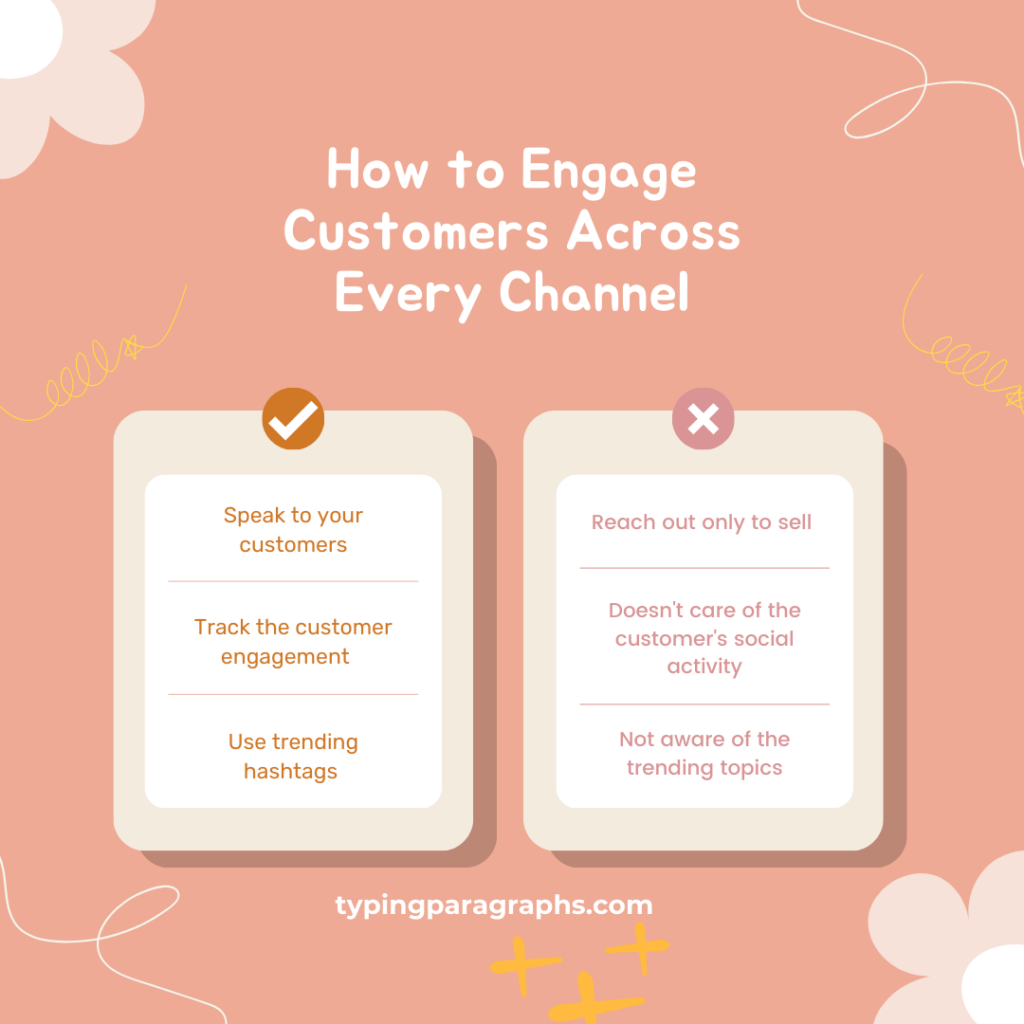Mastering Omnichannel Marketing: How to Engage Customers Across Every Channel

You can copy this text, paste it into Notepad, save it, Check out
An effective omnichannel marketing strategy involves aligning customer touchpoints seamlessly across various channels, emphasizing customer-centricity, and integrating data-driven personalization. It requires a deep understanding of the customer journey to deliver consistent and relevant messaging, regardless of the channel. By breaking down organizational silos and fostering collaboration among departments, businesses can ensure a unified brand experience that resonates with customers at every stage of their journey. This approach relies on leveraging data and analytics to segment audiences, personalize messaging, and measure performance across channels, allowing for continuous optimization and improvement. Ultimately, an omnichannel marketing strategy enables businesses to meet their customers’ evolving needs and expectations, driving engagement, loyalty, and long-term growth.
In today’s interconnected world, where consumers engage with brands across multiple touchpoints and channels, building an omnichannel marketing strategy has become essential for businesses seeking to deliver seamless and integrated experiences to their audience. An omnichannel approach transcends traditional multi-channel marketing by unifying all customer interactions and touchpoints into a cohesive and consistent experience, regardless of the channel or device used.
At the heart of an omnichannel marketing strategy is a deep understanding of the customer journey and the various touchpoints that consumers interact with throughout their buying process. By mapping out the customer journey and identifying key touchpoints across channels – such as social media, email, website, mobile app, and in-store – businesses can gain insights into how customers engage with their brand and tailor their marketing efforts to meet their needs and preferences at each stage of the journey. This customer-centric approach ensures that marketing messages are relevant, timely, and valuable to the customer, leading to higher engagement, conversions, and loyalty.
An effective omnichannel marketing strategy requires seamless integration across all channels and touchpoints, ensuring a consistent brand experience regardless of where and how customers interact with the brand. This integration extends beyond marketing channels to include sales, customer service, and other departments within the organization. By breaking down silos and aligning internal processes and systems, businesses can deliver a unified experience that enhances customer satisfaction and loyalty. For example, a customer should be able to start a conversation with a brand on social media, continue it via email, and complete a purchase through the website or mobile app seamlessly without encountering any friction or inconsistency.
Personalization is a cornerstone of successful omnichannel marketing, allowing businesses to deliver relevant and timely messages to individual customers based on their preferences, behaviours, and past interactions with the brand. By leveraging data and analytics, businesses can segment their audience into distinct groups and tailor their marketing messages and offers to address each segment’s specific needs and interests. Personalization enhances the customer experience and drives engagement, conversions, and loyalty. For example, an e-commerce retailer can send personalized product recommendations to customers based on their browsing history and purchase behaviour, increasing the likelihood of conversion and repeat purchases.
Maintaining consistent brand messaging across all channels and touchpoints is essential for building brand awareness, trust, and loyalty. Whether through social media posts, email campaigns, website content, or advertising, businesses should ensure that their messaging is cohesive, aligned with their brand values, and resonates with their target audience. Consistency in brand messaging helps reinforce brand identity, differentiate the brand from competitors, and create a memorable impression in the minds of consumers. For example, a brand known for its commitment to sustainability should communicate this message consistently across all channels, reinforcing its values and attracting like-minded consumers.
An omnichannel marketing strategy requires ongoing measurement and optimization to ensure effectiveness and continuous improvement. Businesses should track key performance indicators (KPIs) across all channels and touchpoints, such as website traffic, email open rates, social media engagement, and sales conversions, to evaluate the impact of their marketing efforts. By analyzing data and insights, businesses can identify areas for improvement, refine their messaging and targeting strategies, and optimize their marketing campaigns for better results. Additionally, companies should leverage marketing automation and analytics tools to streamline their processes, gain deeper insights into customer behaviour, and make data-driven decisions that maximize ROI and drive business growth.
In conclusion, an omnichannel marketing strategy is essential for businesses seeking to deliver seamless and integrated experiences to their audience across multiple touchpoints and channels. By aligning customer touchpoints seamlessly, emphasizing customer-centricity, integrating data-driven personalization, maintaining consistent brand messaging, and measuring performance and optimization, businesses can create a unified brand experience that resonates with customers, drives engagement, and fosters long-term loyalty. In today’s competitive landscape, companies that embrace an omnichannel marketing approach are better positioned to meet their customers’ evolving needs and expectations and drive sustainable growth in the digital age.
- Diagram illustrating the omnichannel customer journey across digital and physical touchpoints.
- Infographic showing data-driven personalization in an omnichannel marketing strategy.
- Visual representation of integrated customer touchpoints in an omnichannel strategy.
- Graphic of consistent brand messaging across various channels.
- Example of how marketing automation drives an omnichannel marketing strategy.

